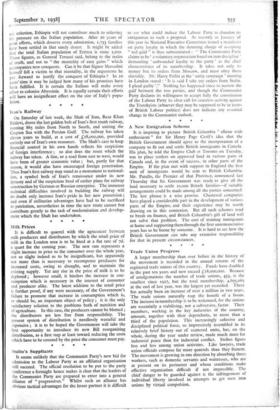Trade Union Progress A larger membership than ever before in
the history of the movement is recorded in the annual returns of the registered trade unions of this country. Funds have doubled in the past ten years and now exceed £18,000,000. Because of amalgamations the number of trade unions, 433, is the smallest since 1927, but the total membership, 4,695,065 at the end of last year, was the largest yet recorded. There has actually been an increase of over a million in two years. The trade unions naturally reap the benefit of a boom. The increase in membership is to be welcomed, for the unions are essentially a stabilising, not a subversive, factor. Their members, working in the key industries of the country, amount, together with their dependants, to more than a third of the population. This increasingly cohesive and disciplined political force, so impressively assembled in its relatively brief history out of scattered units, has, on the whole, during the year under review, made much more for industrial peace than for industrial conflict. Strikes figure less and less among union activities. Like lawyers, trade union officials compose far more quarrels than they foment. The movement is growing in one direction by absorbing those workers, such as domestic servants and waitresses, who are at present on its perimeter and whose conditions make effective organisation difficult if not impossible. The chief danger to be guarded against is the infringement of individual liberty involved in attempts to get men into unions by virtual compulsion.






































 Previous page
Previous page